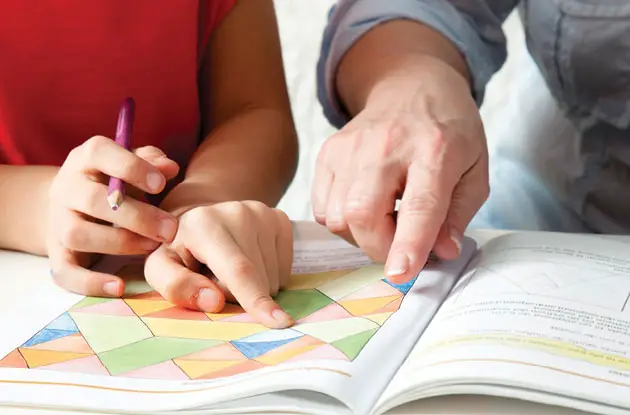So your child thinks history is boring…no surprise there! But what may surprise you is how easily you can turn history into a fun and exciting subject for kids. Here are six ways to make history come to life, even for reluctant learners.
So how do parents help their bored or disinterested kid engage with history beyond a page in a textbook? Sarah Clark, a curator at the Staten Island Historical Society, knows the struggles from teaching her own children about history. “My kids loved to read, and they were enchanted by museum visits when they could see real things that they know about from the books they had read,” Clark says. “I think it’s great to connect museum trips with reading—whether fiction, nonfiction, or even fairy tales.”Waterloo. Amerigo Vespucci. The Alamo. Hitler. The Constitution. The Manhattan Project. The Spanish Inquisition. 1492. 1776. 1789. 1941. 1969. Your child might memorize such historical data by rote for a test, but what value does it really have in the long run if not couched in context? Unless he has a vested interest in the overall timeline and impetus of the event, chances are such an approach to history will put your child to sleep, and fast. The key to learning things by heart—and taking their meaning to heart—is engagement. “If you’re really engaged, memory comes pretty automatically,” says Daniel Willingham, Ph.D., author of Why Don’t Students Like School: A Cognitive Scientist Answers Questions About How the Mind Works and What It Means for the Classroom.
Here, a few more enticing and easy ways to bring history to life for young students.
Join a book club.
Historic Richmond Town on Staten Island has an after-school book club and story museum program for preschoolers. During the program, an educator chooses exciting books that bring history to life. Children who are old enough to choose and read historical stories themselves do. Otherwise, stories are read to them. All books are available from the New York Public Library, which helps keep costs down. According to Clark, “both programs are great for involving children and families in history.”
For parents who want to help their kids start or join a book club, Clark suggests paying attention to their children’s particular interests. “Let them freely choose what areas of history to explore,” says Clark, whose daughter always loved dress-up and began exploring history with coloring books and paper dolls from the Museum Store at Historic Richmond Town. Later, she read Dover Children’s Thrift Classics books, and eventually progressed to the full literary works. The architecture and antiques of the museum connected her to some of the worlds that she was reading about. As a college student, she was lucky enough to study the works of Jane Austen in Bath, England. “If you can find real-world places, objects, or manuscripts to make the history come alive, then children can have experiences that they’ll never forget. You never know where books can take you!”
Help children trace their roots.
One of the best ways to engage children in history is by tracing their own family roots, says Peter “Souleo” Wright, an independent curator for the Stax Museum of American Soul Music. “Children are instinctively curious and inquisitive about their immediate family,” Wright says. “Therefore this is the perfect opportunity to explore questions they may have about their lineage. This is also a great way to make larger historical issues more powerful by connecting them to personal experiences.”
If children discover that they are descendants of slaves, for instance, this can open up a conversation about the history of slavery and the achievements of people such as Harriet Tubman, Sojourner Truth, and Frederick Douglass. Perhaps they discover that a distant relative fought in the Civil War, or volunteered with wounded soldiers returning from overseas during one of the World Wars. Did a female descendant run for government? Every nugget is worth exploring and weaving a story around—helping your child paint of picture of their descendants’ milieu will in turn help them open doors of understanding to history.
Living in the New York area has its advantages, too: A trip to Ellis Island to help children learn about the past is a close one. To prime children for visits, parents should begin to discuss where their children’s grandparents and great grandparents came from by flipping through family pictures. If there are photos of families enjoying traditional meals, that helps parents discuss their ethnicity.
“For children, it may be as simple as starting discussions about why your families eat certain meals or cookies around the holidays. Parents can explain that their parents, grandparents, and great grandparents made those meals first,” says Peg Zitko, the senior vice president of public affairs at the Statue of Liberty-Ellis Island Foundation. “Little kids can have a hard time comprehending that they are descended from a long lineage. They don’t think beyond the people they know.”
During their visit to Ellis Island, children can use the American Immigration Family History Center database to search the museum’s records, which include ship manifest records from 1890 to 1924. By including the names of the relatives you’re searching for as well as their nationality, possible years of arrival, and any family members they might have been traveling with, the database can assist in finding information about the traveler—such as his or her occupation or if the person traveled to the United States multiple times before his or her final trip (men frequently did this to work in America before taking money home), or whether there are other more distant relatives one might find.
If your family has difficulty finding information from the suggestions above, there’s still hope, Zitko says. By the end of the year, the American Immigration Family History Center will soon have access to records from roughly 1820 to 1957.
Choose favorite time periods.
Children (adults, too) have always been fascinated with Egypt, says Bob Brier, a senior research fellow at Long Island University/LIU Post in Brookville. The biggest draw from this popular period—no surprise—is mummies. “When you see children in a mummy exhibit, they’ll stay there as long as you let them,” Brier says. “People don’t talk about death with children. Ask any museum curator, and they’ll tell you the same thing. Children beeline for mummy exhibits. It’s a rare chance for children to look at a dead person, and it fascinates them.”
Brier co-authored the middle-grade book Ancient Egypt: Everyday Life in the Land of the Nile (Sterling), one title in the “Everyday Life” series exploring the day-to-day lives of ancient cultures. If your child isn’t quite so fascinated by pyramids and mummies, the highly readable and captivating series also explores ancient Greece, the Viking age, and the Middle Ages (think Knights of the Roundtable and Arthurian legend in Medieval Europe). If it’s the Revolutionary War era that piques your kid’s interest, why not take a day trip to Boston or Philadelphia to immerse him in the period? By visiting museums, learning about day-to-day life through books such as the “Everyday Life” series, and even watching documentary specials on television, your child just might find an affinity for one particular period which she can explore more deeply.
Learn a new language.
Children have often been mesmerized by the idea of creating their own make-believe worlds. There’s no better way to do that than teaching children how to read and write their own names in hieroglyphics or another “secret” language such as Morse Code. You can use that to teach them about a particular time period and professions people had then.
“Children can write in secret codes with their friends that adults aren’t able to read,” Brier says. “Having a secret language isn’t always the objective—children often like to hear the stories behind their secret language.”
Other families incorporate their native language into traditions and holidays. Perhaps there’s a birthday song or blessing that the child can learn in the family’s native tongue. Even if grandparents don’t remember the songs, there’s a good chance that you can find both the song’s lyrics in the original language as well as a phonetic version on sites such as YouTube. Children who know that a language is important to their family may become more excited about it. Many language classes, which can be found throughout the area, invite parents to learn, too!
Take a hands-on approach.
Although many museums do not allow children to touch various objects, there are museums that are made for children (and exploration!). The Museum of Interesting Things is a traveling interactive demonstration and exhibition of antiques and inventions that goes to schools and events in the area that inspires kids and adults to engage with the displays.
“We will often trust an item in the hands of a student or several students so that they can interact with what changed our country,” Denny Daniel, the museum founder, says. “Kids understand and demonstrate responsibility when you trust them with something that they are normally not allowed to touch, and that impact makes the rest of the message sink in better.”
Daniel, formerly a restorer for such companies as The Statue of Liberty/Ellis Island and the New York Times who amassed an extensive collection of antiques over three decades, started his traveling exhibition to inspire students and some of us in the ‘real’ world to learn from the past and innovate a better future. Historical pieces include an Edison cylinder phonograph from around 1877, a Tibetan prayer book from the early 1600s, and a mechanical calculator from the 1920s that will seem ancient when compared to the app on your mobile!
The Museum of Interesting Things has a monthly Secret Speakeasy event where the audience is engulfed in artifacts relating to a specific theme and also gets to watch actual vintage 16mm films on the theme in a comfortable atmosphere. Party showings and private events can also be arranged; see museumthings.org for details.
Find more kid-friendly museum exhibits near you at nymetroparents.com/museums.
Attend special events.
Each year, the American Museum of Natural History hosts 22 wildly popular sleepover experiences for children and their families. Children pack sleeping bags and toothbrushes, travel around the museum with their parents or chaperones and, eventually, fall asleep under the iconic big blue whale in the Milstein Hall of Ocean Life. Prominent scientists, curators, and historians share their life’s work with guests during these visits.
“The children’s reaction to this experience is always of amazement and wonder,” says Brad Harris, senior director of visitor services at the American Museum of Natural History. “By far the most popular part of the event is the Fossil Exploration by Flashlight. Touring the historic dinosaur hall, dimly lit and by flashlight, simulates the experience of becoming a paleontologist on a ground-breaking dig, discovering these incredible dinosaur bones for the very first time. It is absolutely an unforgettable experience.”
Suffolk County is home to the Walt Whitman Birthplace State Historic Site and Interpretive Center, which has children’s and educational programs from all grade levels that encourage children to play games from the time period in which Whitman lived, begin to write poetry, and discuss the differences between then and now. Children’s programs, which can be used to help scouts earn badges, include making a cornhusk figure (and learning about Native American and Colonial traditions) as well as hosting a Victorian tea party.
Fairfield County, CT families can take advantage of several programs at Mystic Seaport, including the “Life in a Seaport Town” guided tour, which is a favorite among social studies teachers. The tour allows students to visit a re-created 19th-century seafaring village, comprised of New England buildings that are staffed with historians, musicians, storytellers, and craftspeople who tell the stories of those who had various occupations while reinacting what a day in the life of a 19th-century shipsmith, chanteyman, or ship carver would have been like. Horse-drawn carriage rides are also available.
More History-Themed Fun
Top Historical Places to Take Kids in the NYC Area
Discover a treasure trove of nearby destinations to visit with your family.
For Moms and Their ‘Little Women’
Take your little woman on a weekend trip to Concord, MA and the home of Louisa May Alcott, author of Little Women, for a precious peek into the past
Exhibits, Movies, and Games to Get Kids Interested in History
History doesn’t have to include museums—or even leaving your home. Find a list of movies and games that bring history to life.




















